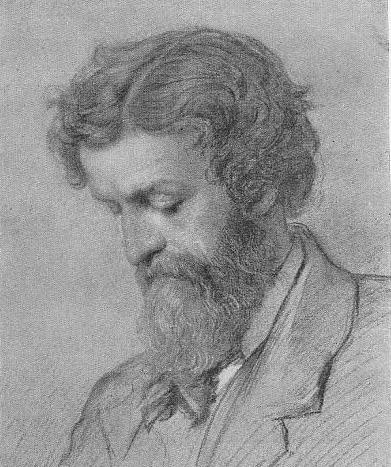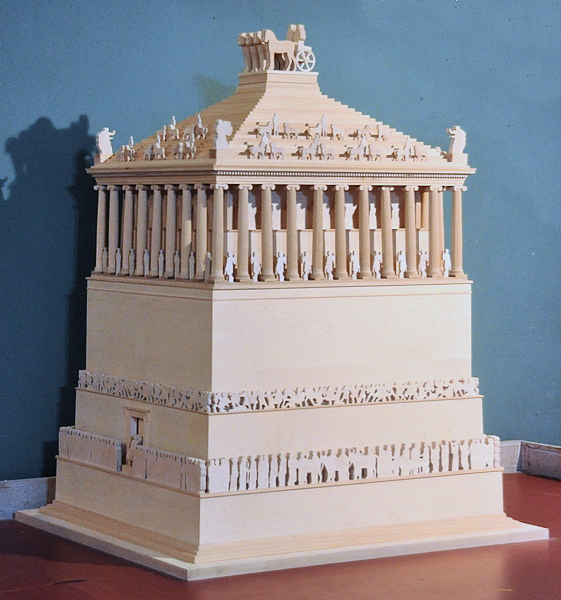
Sir Charles Thomas Newton (1816 – 1894)
On September 16, 1816, British archeologist Sir Charles Thomas Newton was born. Newton excavated sites in southwestern Turkey and disinterred the remains of one of the Seven Wonders of the ancient world, the Mausoleum of Halicarnassus (at present-day Bodrum, Turkey). Newton also helped to establish systematic methods for archaeology.
Charles Thomas Newton – A Career in Archaeology
Charles Thomas Newton was born the second son of Newton Dickinson Hand Newton, vicar of Clungunford, Shropshire. He was educated at Shrewsbury School and received his Masters Degree in 1840 from the Christ Church, Oxford. Here he also became friends with John Ruskin.[4] From the beginning of his studies, he was probably interested in the study of classical archaeology and later entered the British Museum as an assistant in the department of antiquities. During his work as an assistant at the British Museum, he worked mainly in the coin collection. The position opened up a wide range of new possibilities for Newton to study. From 1852 to 1860 he was British vice-consul in Mytilene on Lesbos, 1853/54 on Rhodes, 1860 British consul in Rome. During his time as consul in the Aegean, Newton was able to conduct numerous excavations on the Turkish west coast. With the creation of a new department for classical antiquities at the British Museum in January 1861, Newton became the first Keeper of Greek and Roman Antiquities, a position he held until 1885
The Mausoleum of Halicarnassus
As a result, Charles Newton was able to enrich the British Museum with a series of inscriptions. One year later, Newton was able to identify and recover the site of the mausoleum at Halicarnassus. However, finding the right location was not easy. Newton studied the accounts of ancient writers like Pliny to obtain the approximate size and location of the memorial, then bought a plot of land in the most likely location.[5] While digging, Newton explored the surrounding area through tunnels he dug under the surrounding plots. He was able to locate some walls, a staircase, and finally three of the corners of the foundation.

Model of the Mausoleum at Halicarnassus, at the Bodrum Museum of Underwater Archaeology.
Excavations
With this knowledge, Newton was able to determine which plots of land he needed to buy. Newton then excavated the site and found sections of the reliefs that decorated the wall of the building and portions of the stepped roof. Also discovered was a broken stone chariot wheel. The wheel came from the sculpture on the Mausoleum’s roof and he also found the statues of Mausolus and Artemisia that had stood at the pinnacle of the building. Blocks of marble were carried from the site and were used for the construction of a new dock in Malta for the Royal Navy. A major part of the excavations were also the decorations and statues that adorned the outside at different levels on the podium and the roof.
Later Life
The main purpose of his excavations was to find finds for the museum, an excavation methodology was foreign to him, the documentation of the excavations was insufficient. As head of the Department of Antiquities, he succeeded in expanding the collection by acquiring numerous private collections, he was able to reposition the Elgin Marbles and the sculptures from the mausoleum. Together with Samuel Birch, he published the first catalog of the vases of the British Museum (1851-70) and the catalog of the Greek inscriptions of the museum (1874-90). From 1880 to 1888, he was also the first Yates Professor of Classical Art and Archaeology to teach at University College, University of London. In 1887, he was elevated to the personal rank of nobility by appointment as Knight Commander of the Order of the Bath. In 1876 he was elected a foreign member of the Bavarian Academy of Sciences and in 1877 of the Göttingen Academy of Sciences.
On 28 November 1894 he died at Margate, at age 78.
Great Wonders: The Mausoleum of Halicarnassus and its Successors [8]
References and Further Reading:
- [1] Garnett, Richard (1911). “Newton, Sir Charles Thomas“. In Chisholm, Hugh (ed.). Encyclopædia Britannica. Vol. 19 (11th ed.). Cambridge University Press. p. 582.
- [2] Charles Thomas Newton at the British Museum
- [3] Charles T. Newton, History of Discoveries at Halicarnassus
- [4] John Ruskin – Victorian Social Thinker and Art Lover, SciHi Blog
- [5] Pliny the Elder and the Destruction of Pompeii, SciHi Blog
- [6] Smith, Cecil Harcourt (1901). “Newton, Sir Charles Thomas“. Dictionary of National Biography (1st supplement). London: Smith, Elder & Co.
- [7] Works written by or about Charles Thomas Newton at Wikisource
- [8] Great Wonders: The Mausoleum of Halicarnassus and its Successors, Penn Museum @ youtube
- [9] Charles Thomas Newton at Wikidata
- [10] Timeline of English Archaeologists, via Wikidata and DBpedia





